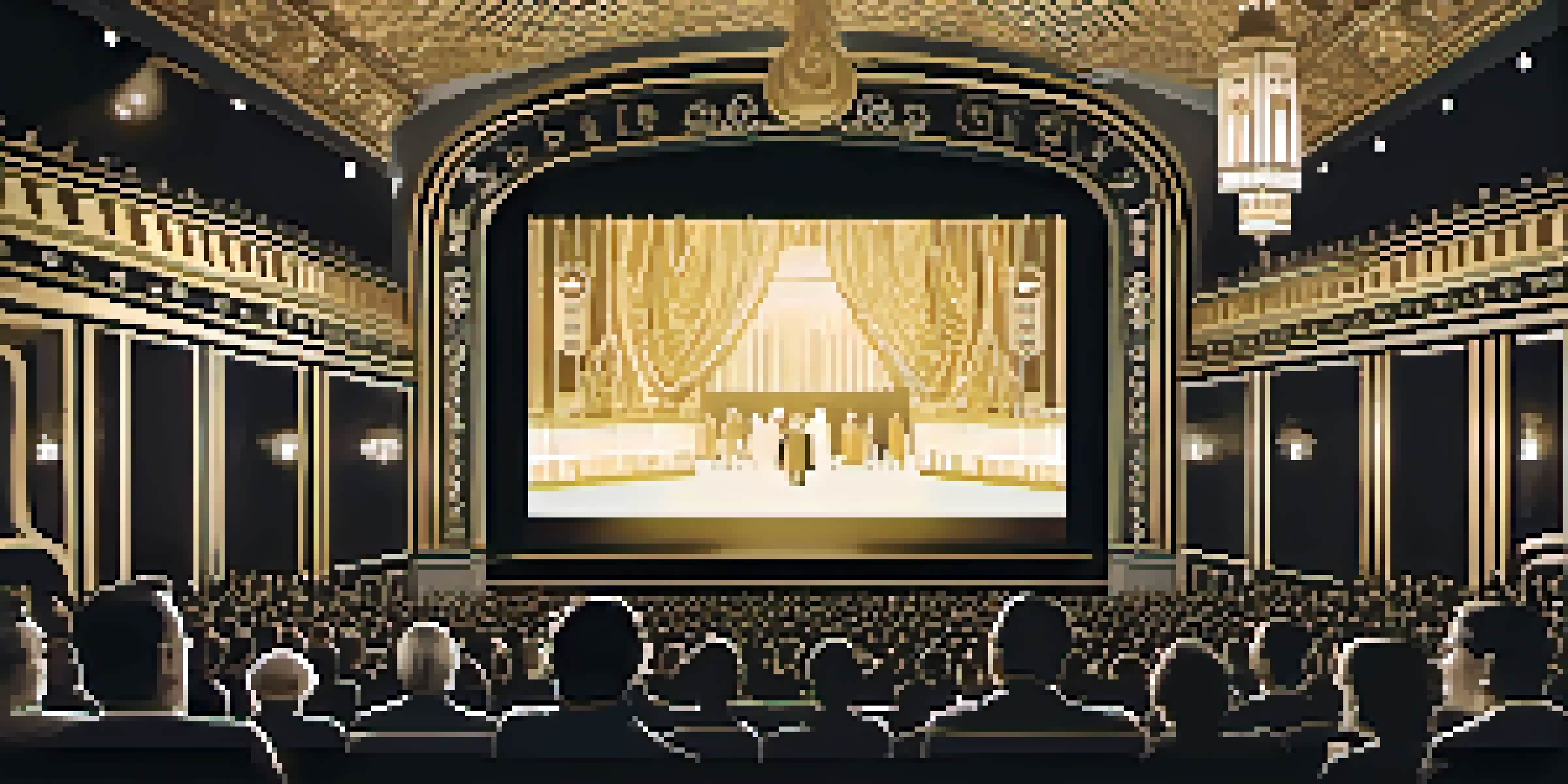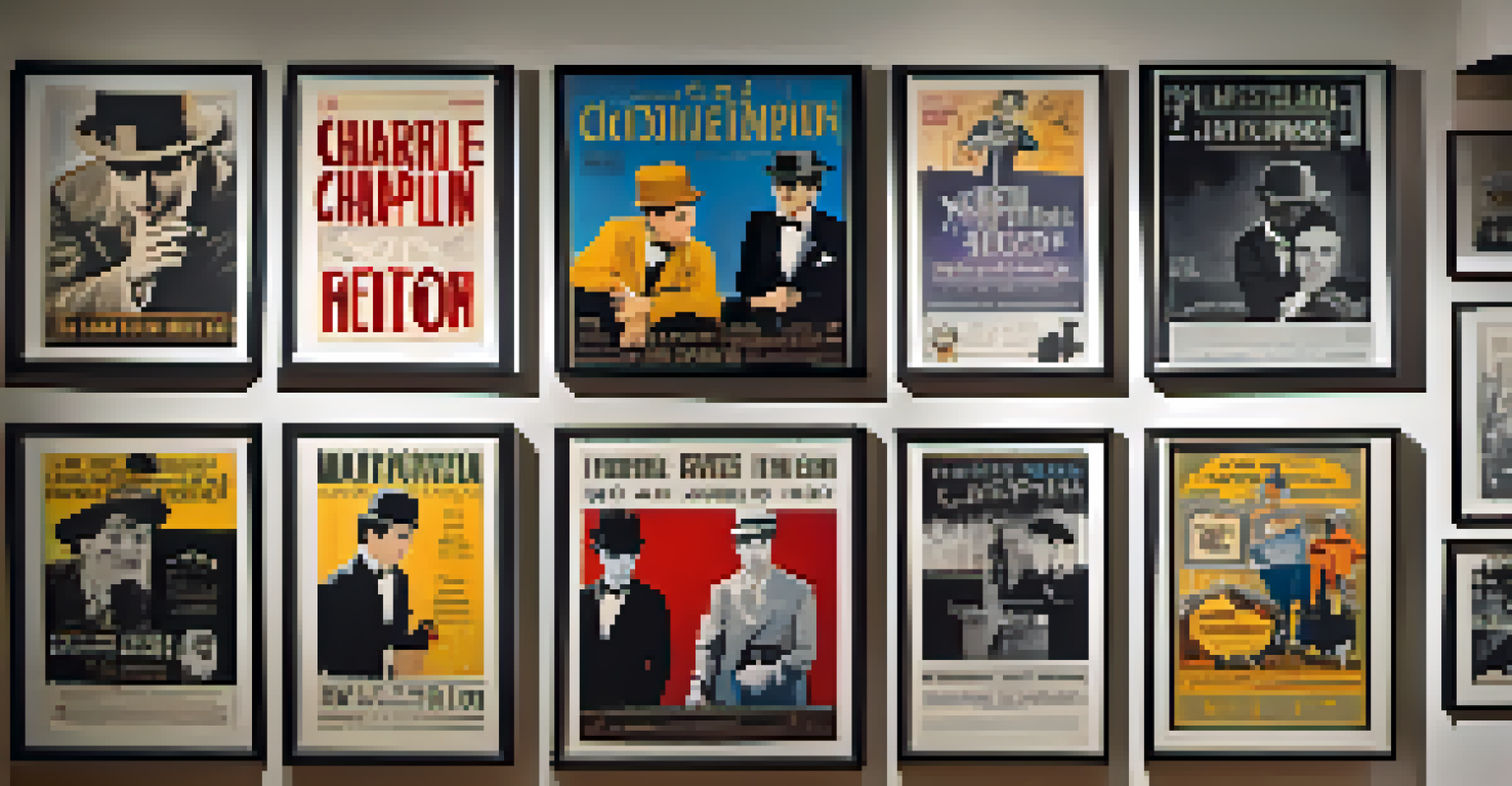The Birth of Film: Exploring Early Silent Film Technology

The Dawn of Motion Pictures: A Brief Overview
The birth of film is often traced back to the late 19th century when inventors started experimenting with capturing motion. Early pioneers like Louis Le Prince and Thomas Edison laid the groundwork for film technology, paving the way for what we now know as cinema. These innovators were driven by a simple yet profound desire: to capture life in motion and share it with the world.
The cinema is a matter of what's in the frame and what's out of it.
Edison’s Kinetoscope, invented in 1891, was one of the first devices to display moving pictures. This machine allowed one person at a time to watch short films through a peephole, marking a significant shift in entertainment. Although it wasn't a communal experience, it inspired a wave of creativity that would soon evolve into something much larger.
As film technology advanced, the notion of storytelling through motion pictures began to emerge. Filmmakers started experimenting with narrative structures, leading to the creation of short films that laid the foundation for future cinematic storytelling. This era was just the beginning of a new form of art that would captivate audiences for generations.
Early Innovations: Key Technologies Behind Silent Films
One of the most significant innovations during the silent film era was the development of the motion picture camera. The combination of a rotating shutter and rapid film movement allowed for the capturing of fluid motion. This technology was crucial in creating the illusion of movement that audiences had never experienced before.

Another important advancement was the use of film stock, which was a flexible strip of plastic coated with light-sensitive emulsion. This made it possible for filmmakers to record images with greater clarity and detail. Over time, improvements in film stock quality led to better visuals, enhancing the overall viewing experience.
Birth of Film and Early Innovations
The late 19th century saw the inception of film technology, with pioneers like Edison and the Lumière brothers transforming entertainment through motion pictures.
In addition, techniques such as stop motion and time-lapse photography began to surface, allowing for greater creativity in storytelling. These methods captivated audiences by making the impossible seem possible, further establishing film as a unique medium of expression.
The Role of Projection: Bringing Films to Life
Projection technology was another crucial component in the early days of film. The invention of the projector allowed films to be viewed by larger audiences, transforming the experience from a solitary to a communal one. This shift fundamentally changed how people interacted with films and each other.
Film is a powerful medium for storytelling, a way to connect the stories of our past with the present.
The first successful projector was developed by the Lumière brothers in 1895, which showcased films to enthusiastic crowds. Their debut screening of 'La Sortie de l'Usine Lumière' marked a milestone in cinema history, as it was one of the first public film screenings ever held. Audiences were mesmerized by the moving images, igniting a fascination with the medium.
As projection technology continued to evolve, it became easier to screen films in theaters, leading to the establishment of the film industry as we know it today. The experience of watching movies became a popular pastime, bringing people together and fostering a sense of community.
The Artistic Vision: Directors and Their Influence
The silent film era was also marked by the emergence of influential directors who pushed the boundaries of storytelling. Figures like D.W. Griffith revolutionized the art of filmmaking by experimenting with editing techniques and narrative structures. His work laid the groundwork for many conventions still used in film today.
Griffith’s film 'The Birth of a Nation' is often cited as a turning point in cinematic storytelling, despite its controversial themes. It showcased the power of film as a medium for conveying complex narratives and emotions. Directors during this time explored various genres, from drama to comedy, enriching the cinematic landscape.
Impact of Sound on Filmmaking
The transition from silent films to 'talkies' marked a significant evolution in storytelling, allowing filmmakers to enrich narratives with dialogue and sound.
Moreover, these filmmakers began to understand the importance of visual storytelling. They utilized techniques such as close-ups, cross-cutting, and symbolic imagery to enhance the emotional impact of their films. This artistic vision was crucial in establishing film as a legitimate form of art.
The Sound Barrier: Transitioning to Talkies
As the silent film era progressed, filmmakers faced an inevitable challenge: the introduction of sound. While silent films relied heavily on visuals and live music for emotional cues, the growing popularity of 'talkies' threatened to overshadow this art form. The first synchronized sound feature, 'The Jazz Singer,' released in 1927, marked a seismic shift in the industry.
The transition from silent films to talkies was not seamless. Many silent film stars struggled to adapt to the new technology, as not all of them had the vocal talents to match their screen presence. This change led to a significant reshaping of the film industry, with new talents emerging to take center stage.
Despite these challenges, the advent of sound opened up a new realm of creative possibilities for filmmakers. They could now incorporate dialogue, sound effects, and music, enhancing storytelling in ways previously thought impossible. This evolution ultimately led to a richer cinematic experience for audiences.
Cultural Impact: Silent Films in Society
Silent films not only entertained audiences but also reflected societal values and issues of their time. They tackled themes such as love, war, and social justice, often serving as a mirror to the world. This cultural significance helped solidify film as a powerful medium for commentary and change.
The impact of silent films extended beyond the silver screen; they influenced fashion, music, and even language. Iconic stars like Charlie Chaplin and Buster Keaton became cultural icons, shaping popular culture and leaving a lasting legacy. Their comedic performances transcended language barriers, making them beloved figures worldwide.
Cultural Significance of Silent Films
Silent films not only entertained but also reflected societal values, influencing fashion and culture while establishing cinema as a powerful medium for change.
Moreover, silent films played a vital role in the early development of film festivals and award shows, recognizing the artistic contributions of filmmakers. This acknowledgment further solidified the importance of cinema in society and its potential to inspire and provoke thought.
Legacy of Silent Films: A Lasting Influence on Cinema
The silent film era laid the foundation for the modern film industry, influencing countless filmmakers and genres. Techniques developed during this time, such as montage and visual storytelling, are still integral to filmmaking today. Silent films taught future generations the power of imagery and emotion in storytelling.
Additionally, many silent film classics continue to be celebrated and studied in film schools around the world. They serve as a reminder of the creative spirit that drove early filmmakers to innovate and connect with audiences. The artistry and craftsmanship of these films continue to inspire new generations of filmmakers.

As we look back on the birth of film, it's essential to recognize the profound impact silent films had on shaping the cinematic landscape. Their legacy lives on, reminding us of the magic that can be created with light, shadow, and a story waiting to be told.